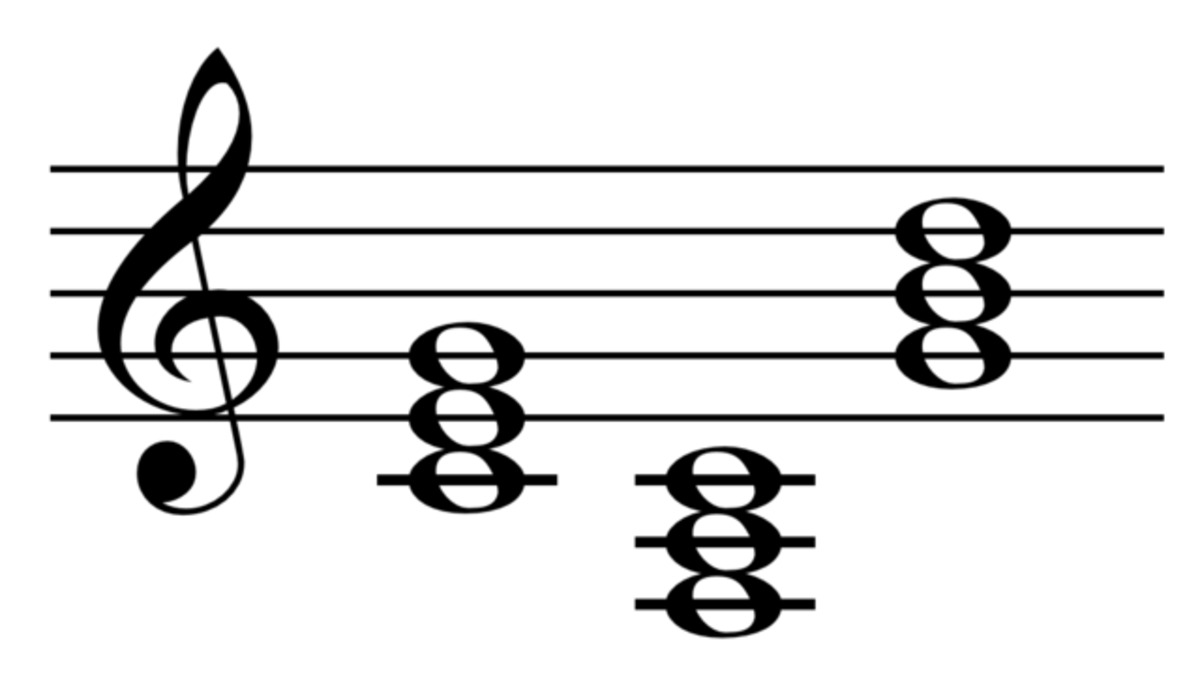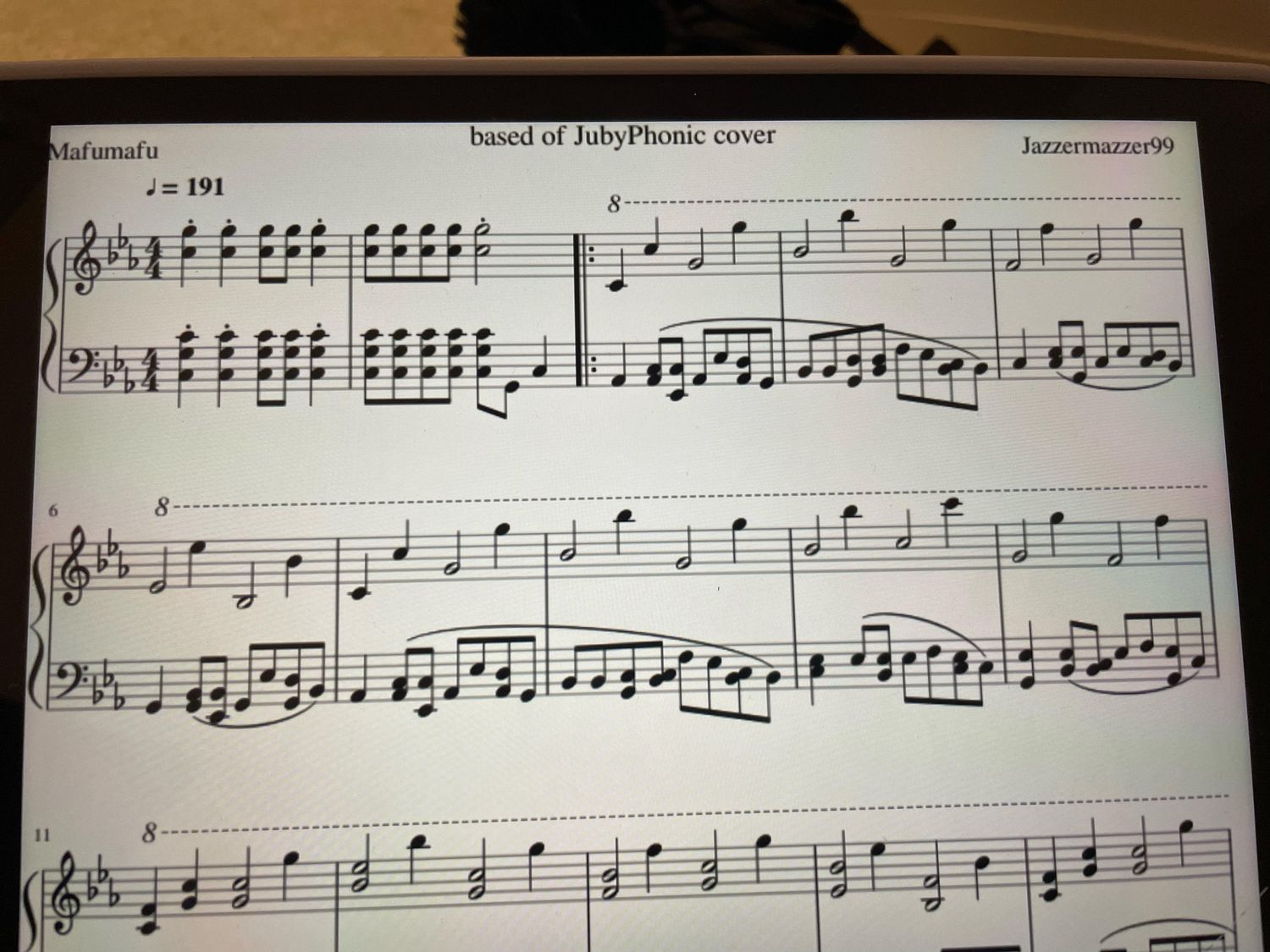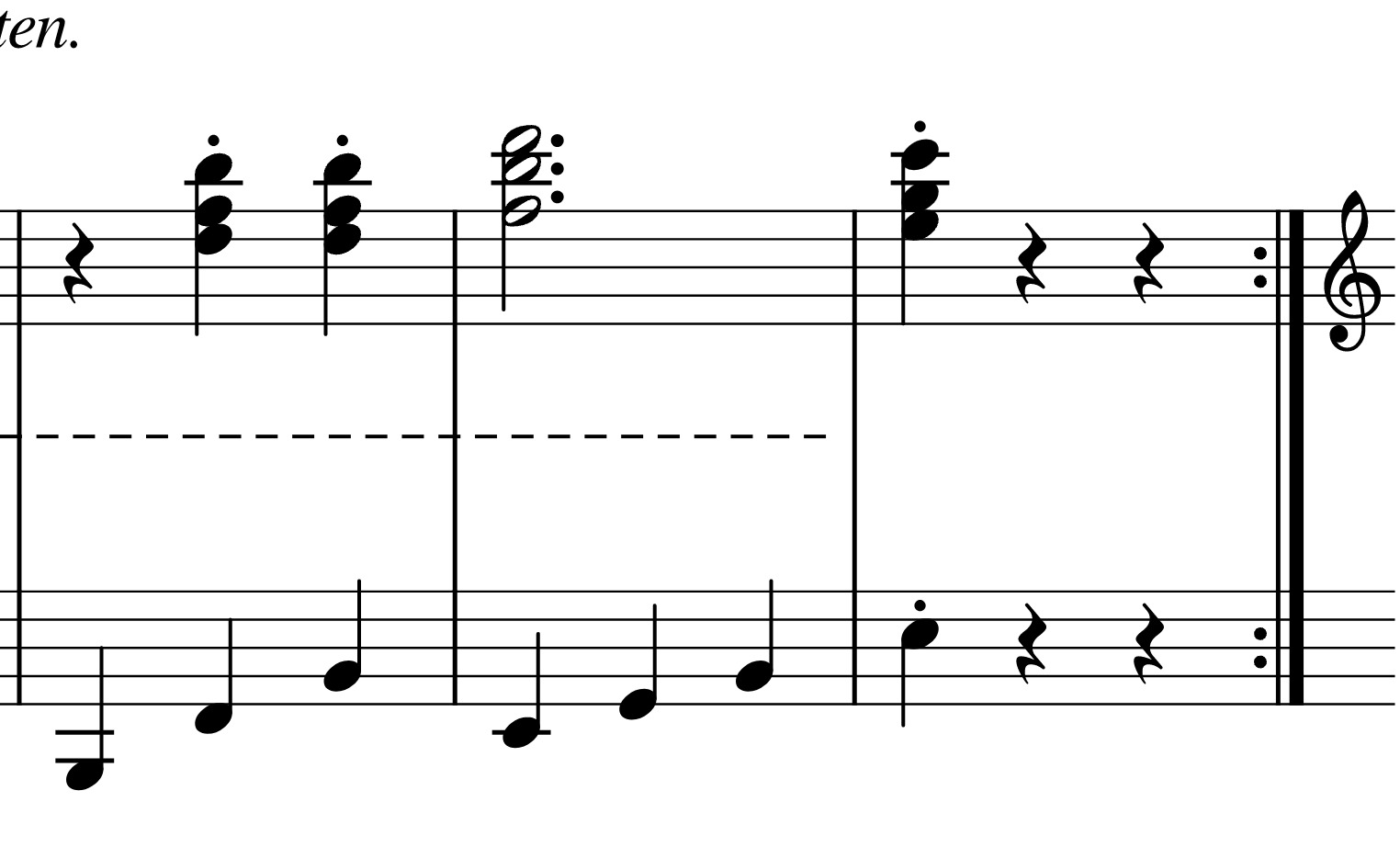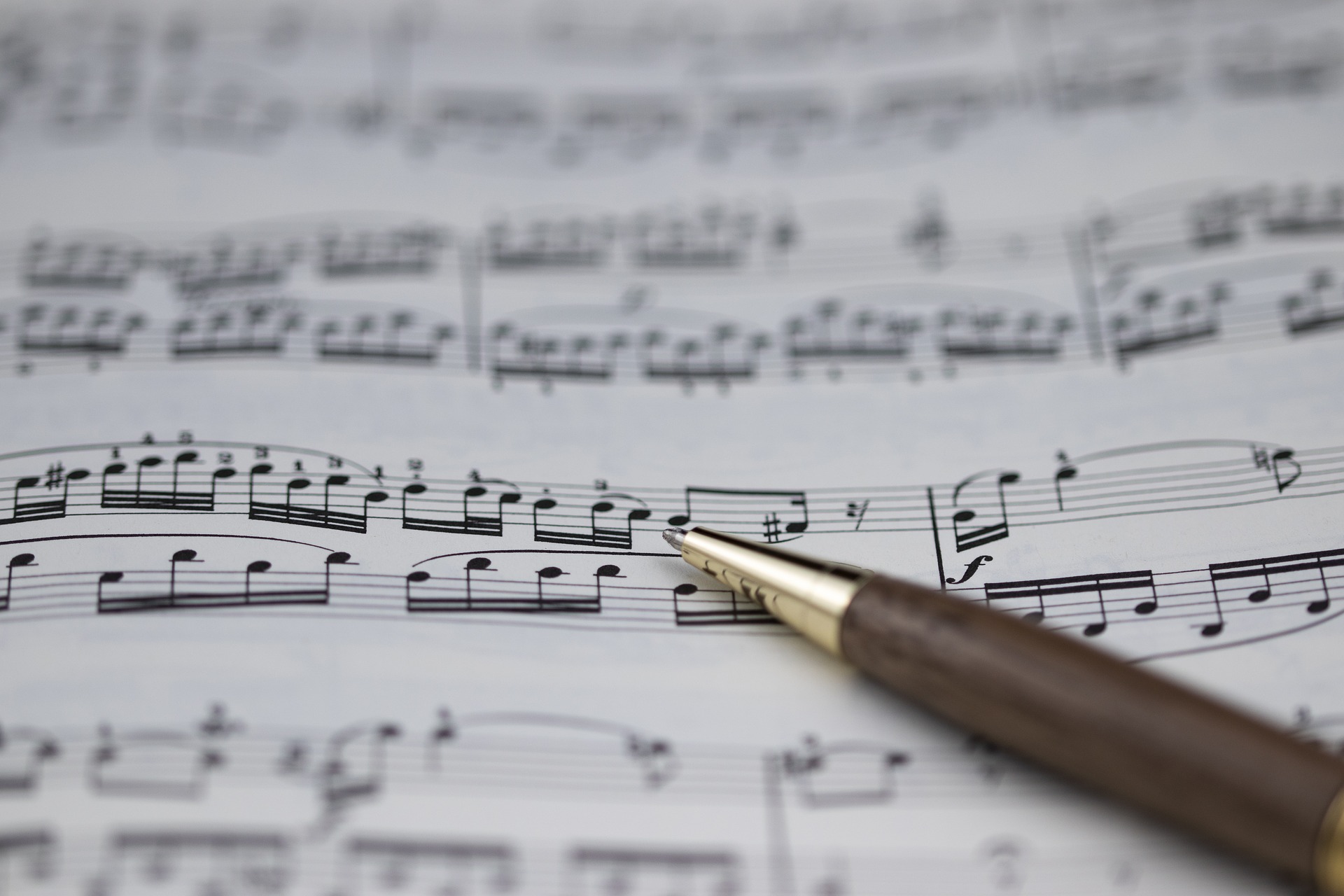Home>Production & Technology>Music Theory>What Is A Contrasting Idea Music Theory
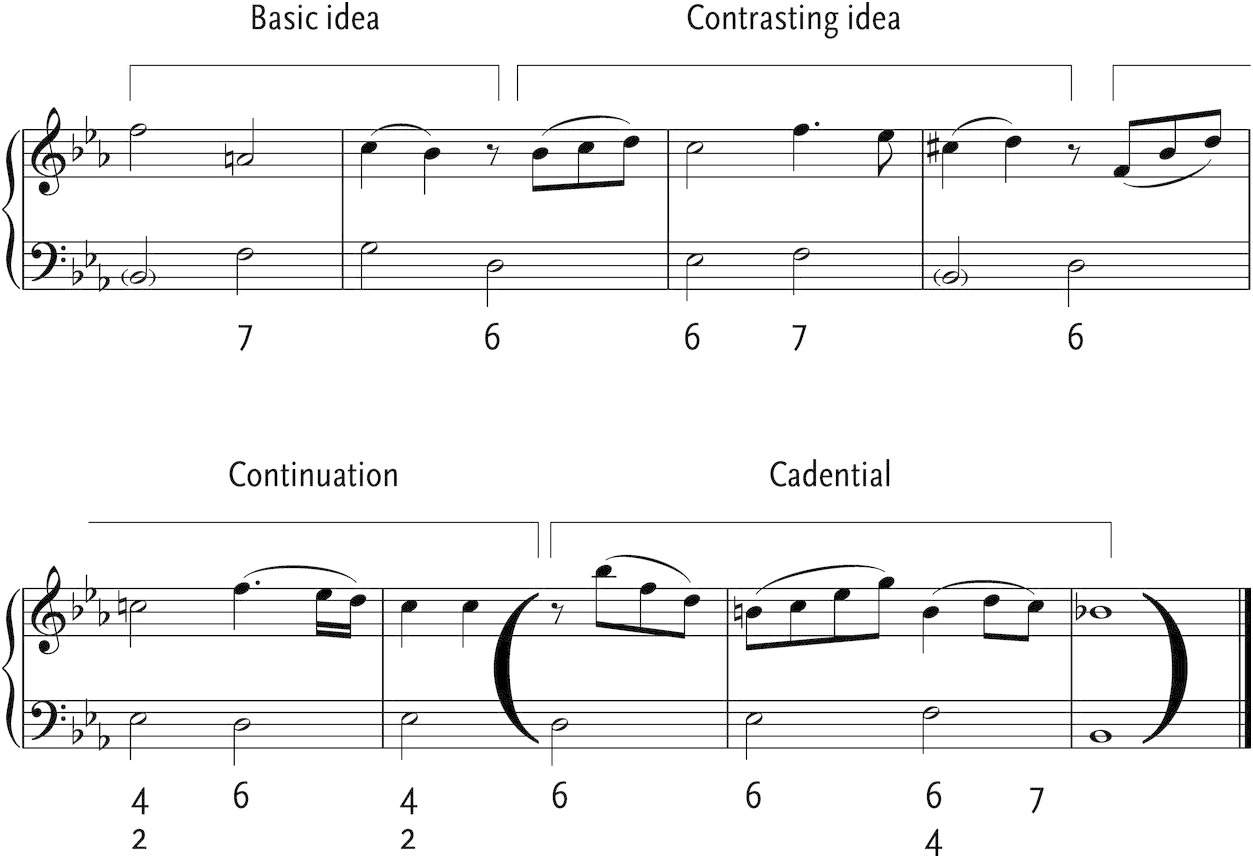

Music Theory
What Is A Contrasting Idea Music Theory
Published: January 31, 2024
Discover the concept of contrasting ideas in music theory and how they enhance composition. Dive into the world of music theory and expand your understanding.
(Many of the links in this article redirect to a specific reviewed product. Your purchase of these products through affiliate links helps to generate commission for AudioLover.com, at no extra cost. Learn more)
Table of Contents
- Introduction
- Definition of Contrasting Ideas in Music Theory
- Characteristics of Contrasting Ideas in Music
- Importance of Contrasting Ideas in Music Composition
- Examples of Contrasting Ideas in Music
- Techniques for Incorporating Contrasting Ideas in Music
- Analysis of Famous Compositions Utilizing Contrasting Ideas
- Conclusion
Introduction
Music theory is a fascinating field that explores the principles and concepts behind the creation and organization of music. One fundamental aspect of music theory is the concept of contrasting ideas, which plays a crucial role in enhancing the structure, emotional depth, and overall impact of musical compositions.
Contrasting ideas in music refer to the deliberate use of diverse elements such as melody, harmony, rhythm, dynamics, and timbre to create a sense of variation and contrast within a composition. The juxtaposition of contrasting ideas can create tension, release, and emotional impact, adding depth and intrigue to a piece of music.
Contrasting ideas can be observed in various musical elements. For example, in melody, contrasting ideas may involve the use of leaps and steps, or high and low notes. In harmony, contrasting ideas can be created through the use of dissonance and consonance. In rhythm, contrasting ideas may involve alternating between fast and slow tempos, or syncopated and regular rhythms.
The purpose of utilizing contrasting ideas in music is to engage the listener’s attention and evoke emotional responses. By introducing contrasting elements, composers are able to create a journey of tension and resolution, surprise and predictability, unity and diversity.
Furthermore, contrasting ideas also contribute to the overall structure and form of a musical composition. They help to delineate different sections or movements, providing a sense of progression and development. Through the strategic placement of contrasting ideas, composers can guide the listener through a cohesive musical narrative.
In this article, we will explore the characteristics of contrasting ideas in music, the importance of utilizing them in music composition, and provide examples of famous compositions that effectively utilize contrasting ideas to captivate and engage the listener.
Definition of Contrasting Ideas in Music Theory
In music theory, contrasting ideas refer to the deliberate use of contrasting elements within a composition to create variety, tension, and emotional impact. These contrasting elements can manifest in different forms, such as melody, harmony, rhythm, dynamics, and timbre.
Contrasting ideas are essential in music as they provide a sense of variation and interest to the listener. Without contrasting ideas, a piece of music can become monotonous and lack the necessary depth and emotional impact.
For example, in terms of melody, contrasting ideas can be achieved through the use of intervals, or the distance between notes. An ascending melodic phrase can create a sense of optimism and upwards movement, while a descending phrase can evoke a feeling of melancholy or introspection. By incorporating both ascending and descending melodic ideas, composers can introduce contrast and shape the emotional journey of the composition.
Harmony also plays a significant role in creating contrasting ideas. The use of dissonance and consonance can create tension and resolution within a musical piece. Dissonant chords can create a sense of unrest or anticipation, while consonant chords provide a feeling of stability and comfort. By skillfully alternating between dissonance and consonance, composers can create a dynamic and compelling musical experience.
Rhythm is another element that can be utilized to introduce contrasting ideas. Alternating between fast and slow tempos, or incorporating irregular rhythms can create a sense of tension and release. Syncopation, where emphasis is placed on off-beat notes, can also be used to introduce contrast and add energy to a musical composition.
Dynamics, the variation in volume, also play a crucial role in contrasting ideas. The contrast between loud and soft sections can create a dramatic effect and evoke different emotional responses in the listener. Composers can strategically vary the dynamics to enhance the overall impact and storytelling within a musical piece.
Timbre, or the quality of sound, can also be employed to introduce contrasting ideas. By utilizing different instruments or a combination of instrumental and vocal elements, composers can create contrast in the color and texture of the music. This adds depth and richness to the overall composition.
Overall, contrasting ideas in music theory encompass a range of techniques and approaches that composers use to create variety, tension, and emotional impact within a musical piece. By skillfully employing contrasting elements, composers can engage the listener and create a compelling and memorable musical experience.
Characteristics of Contrasting Ideas in Music
Contrasting ideas in music possess several characteristic elements that contribute to their effectiveness in creating variation and impact within a composition. Understanding these characteristics can help composers and music enthusiasts appreciate and utilize contrasting ideas more effectively.
1. Variety: Contrasting ideas introduce variety and diversity within a musical piece. By incorporating different melodic, harmonic, rhythmic, and dynamic elements, composers can avoid monotony and keep the listener engaged. The interplay of contrasting ideas adds interest and captivates the listener’s attention.
2. Tension and Release: Contrasting ideas create tension and release within a musical composition. The juxtaposition of various elements such as dissonance and consonance, fast and slow tempos, or soft and loud dynamics generates a sense of anticipation and resolution. This dynamic interplay of tension and release adds drama and emotional depth to the music.
3. Emotional Impact: Contrasting ideas evoke emotional responses from the listener. The use of contrasting elements can create a range of emotions, such as joy, sadness, excitement, or contemplation. By skillfully layering contrasting ideas, composers are able to express and convey their intentions and emotions effectively.
4. Structural Cohesion: Contrasting ideas contribute to the overall structure and cohesiveness of a musical composition. They help differentiate sections or movements within a piece, creating a sense of progression and development. The strategic placement and interweaving of contrasting ideas ensure a well-structured and engaging musical experience.
5. Auditory Interest: Contrasting ideas provide auditory interest and intrigue. The incorporation of unexpected or contrasting elements grabs the listener’s attention and stimulates their curiosity. This enhances the overall listening experience and encourages active engagement with the music.
6. Artistic Expression: Contrasting ideas allow composers to showcase their artistic expression and creativity. By exploring various combinations and juxtapositions of contrasting elements, composers can shape the unique character and style of their music. This artistic freedom contributes to the richness and diversity of musical compositions.
7. Unity and Diversity: Contrasting ideas strike a balance between unity and diversity. While contrasting elements create variation and interest, they are also integrated within a cohesive musical framework. The blending of diverse elements ensures that the contrasting ideas work harmoniously together, enhancing the overall musical experience.
Through the incorporation of these characteristic elements, contrasting ideas enrich the musical landscape, creating intricate and captivating compositions. Composers utilize these characteristics to engage the listener, evoke emotions, and craft compelling narratives through their music.
Importance of Contrasting Ideas in Music Composition
Contrasting ideas play a crucial role in music composition, bringing depth, interest, and emotional impact to a piece of music. They serve as essential building blocks that composers use to captivate listeners and create memorable musical experiences. Here are some reasons highlighting the importance of incorporating contrasting ideas in music composition:
1. Expressing Emotion: Contrasting ideas allow composers to convey a wide range of emotions within a composition. By introducing contrasting elements, such as serene versus intense passages, composers can effectively evoke specific emotional responses in the listener. This emotional depth adds richness and connection to the music.
2. Creating Musical Narrative: Contrasting ideas help shape the structure and narrative flow of a composition. By incorporating contrasting sections or themes, composers can provide a sense of development and progression, creating a musical story that unfolds. The alternation between contrasting ideas keeps the listener engaged and intrigued.
3. Adding Interest and Variety: Contrasting ideas prevent monotony and create interest and variety in a musical piece. The use of diverse elements, such as different melodies, harmonies, rhythms, and dynamics, keeps the listener engaged and captivated. The interplay of contrasting ideas adds intrigue and excitement to the music.
4. Enhancing Musical Form: Contrasting ideas contribute to the overall structure and form of a composition. They help delineate different sections or movements, providing a sense of organization and coherence. The contrast between sections creates a satisfying balance, allowing the listener to follow the musical journey seamlessly.
5. Evoking Tension and Release: Contrasting ideas create tension and release within a musical piece. By alternating between elements such as consonance and dissonance, fast and slow tempos, or soft and loud dynamics, composers can generate a sense of anticipation and resolution. This emotional arc captivates the listener and adds depth to the composition.
6. Showcasing Artistic Skill: Incorporating contrasting ideas allows composers to showcase their artistic skill and creativity. By skillfully interweaving different elements, composers can demonstrate their ability to craft intricate and compelling musical compositions. This artistic expression adds a personal touch and uniqueness to their music.
7. Engaging the Listener: Contrasting ideas actively engage the listener by creating moments of surprise and anticipation. The interplay between contrasting elements grabs the listener’s attention and stimulates their curiosity. This engagement enhances the overall listening experience and fosters a deeper connection between the listener and the music.
Overall, the inclusion of contrasting ideas in music composition is vital for creating emotional impact, maintaining interest, shaping the structure, and showcasing artistic expression. Composers utilize these contrasting elements to craft captivating musical narratives that resonate with listeners and leave a lasting impression.
Examples of Contrasting Ideas in Music
Contrasting ideas can be found in various musical genres and compositions, showcasing the versatility and effectiveness of this technique in creating impact and interest. Here are a few examples that demonstrate the use of contrasting ideas:
1. Beethoven’s Symphony No. 5: One of the most iconic examples of contrasting ideas in classical music is Beethoven’s Symphony No. 5. The famous four-note motif that drives the entire symphony contrasts with the lyrical and melodic passages that follow. The alternation between the bold, forceful motif and the more delicate, introspective melodies creates a powerful sense of tension and resolution throughout the symphony.
2. Queen’s “Bohemian Rhapsody”: This legendary rock song by Queen is a masterclass in contrasting ideas. It seamlessly blends operatic sections with hard-rock elements, shifting between soft ballad-like verses and a powerful choral section. The contrast between the different musical styles and genres within the song adds drama, intensity, and unpredictability, capturing the listener’s attention from start to finish.
3. Miles Davis’ “So What”: In this jazz composition, Miles Davis introduces contrasting sections to create interest and variation. The minimalist and repetitive nature of the main theme is contrasted with lively solos and improvisations by the individual band members. The interaction between the steady, laid-back groove and the spontaneous bursts of creativity generates a dynamic and engaging musical experience.
4. Taylor Swift’s “Love Story”: This contemporary pop song demonstrates the use of contrasting ideas in a catchy and accessible way. The contrasting sections of the song, from the gentle and romantic verses to the soaring and anthemic chorus, create an emotional rollercoaster for the listener. This combination of contrasting elements keeps the song fresh and memorable.
5. Mozart’s Symphony No. 40: Mozart’s Symphony No. 40 in G minor showcases contrasting ideas through its use of dynamics and mood. The intensity and darkness of the minor key passages are contrasted with moments of lightness and optimism in the major key sections. The alternation between these contrasting moods adds depth and dramatic effect to the symphony.
6. Radiohead’s “Paranoid Android”: This alternative rock song by Radiohead incorporates contrasting sections that seamlessly flow into each other. The song transitions from delicate and melodic verses to a heavy and chaotic middle section before returning to a subdued outro. These contrasting ideas create a sense of tension, surprise, and emotional intensity.
These examples highlight the diverse ways in which contrasting ideas are used to create impact, variety, and emotional depth within musical compositions. From classical symphonies to modern pop and rock songs, contrasting ideas remain an essential tool for captivating listeners and evoking emotional responses.
Techniques for Incorporating Contrasting Ideas in Music
There are several techniques that composers can utilize to effectively incorporate contrasting ideas into their musical compositions. These techniques serve as tools for creating variation, tension, and emotional impact. Let’s explore some of these techniques:
1. Melodic Contrasts: Composers can create melodic contrasts by alternating between ascending and descending patterns, using leaps and steps, or incorporating different note durations. This variation in melody adds interest and captures the listener’s attention.
2. Harmonic Contrasts: Contrast can be achieved through the use of different chord progressions, alternating between consonant and dissonant chords, or introducing unexpected harmonic changes. These harmonic contrasts create tension and provide resolution, enhancing the emotional impact of the music.
3. Rhythmic Contrasts: Contrast in rhythm can be achieved by alternating between fast and slow tempos, introducing syncopation or irregular rhythms, or using unexpected rhythmic patterns. These rhythmic contrasts add excitement and energy to a composition.
4. Dynamic Contrasts: Varying the volume and intensity of a composition creates dynamic contrasts. Alternating between soft and loud sections or using sudden shifts in dynamics can create dramatic effects and convey a range of emotions.
5. Textural Contrasts: Contrast in texture can be achieved by incorporating different instrumental or vocal combinations, layering different musical elements, or alternating between thick and thin textures. These textural contrasts add depth and create sonic interest.
6. Timbral Contrasts: Utilizing different timbres or instrumental colors can create contrasts within a composition. Alternating between bright and dark timbres or introducing contrasting instrumental solos can add variety and aural intrigue to the music.
7. Tempo Contrasts: Changing the tempo or introducing shifts in speed within a composition can create contrasts. Alternating between slow and fast sections or utilizing rubato, a flexible interpretation of tempo, adds expressive and dynamic contrasts to the music.
8. Mood Contrasts: Creating contrasts in mood and emotion can be achieved by juxtaposing contrasting musical themes or styles. Introducing contrasting musical motifs or shifts in tonality can evoke different emotional responses and enhance the overall impact of the composition.
9. Formal Contrasts: Structuring a composition with contrasting sections or movements provides a clear delineation between different ideas or themes. This formal contrast helps create a cohesive musical narrative and keeps the listener engaged throughout the piece.
10. Dynamic Variation: The dynamic interplay between contrasting ideas can be enhanced through techniques such as call and response, where contrasting musical phrases or sections alternate and respond to each other. This back-and-forth interaction adds depth and intrigue to the music.
By utilizing these techniques, composers can effectively incorporate contrasting ideas into their compositions, creating variation, tension, and emotional impact. The skillful interplay of contrasting elements allows for a diverse and engaging musical experience.
Analysis of Famous Compositions Utilizing Contrasting Ideas
Famous composers throughout history have employed contrasting ideas in their compositions to great effect, resulting in timeless and impactful musical works. Let’s analyze a few notable compositions that showcase the mastery of contrasting ideas:
1. Ludwig van Beethoven – Symphony No. 9: Beethoven’s Symphony No. 9 is a masterpiece that exemplifies the use of contrasting ideas. The symphony opens with a dark and brooding atmosphere, contrasting with the exuberant and joyful choral finale featuring the famous “Ode to Joy” theme. The contrast between the somber and triumphant sections creates a powerful emotional journey, conveying both struggle and ultimate triumph.
2. Johann Sebastian Bach – Brandenburg Concerto No. 3: In Bach’s Brandenburg Concerto No. 3, contrasting ideas are evident in the dialogue between the solo instruments and the full ensemble. The energetic and virtuosic solo passages contrast with the rich and harmonious tutti sections. This interplay between the soloists and the ensemble brings dynamic variation and showcases the individual and collective musical talents.
3. Igor Stravinsky – The Rite of Spring: Stravinsky’s The Rite of Spring is a groundbreaking composition that challenges traditional musical conventions. The piece is known for its bold and dissonant harmonies, complex rhythms, and contrasting musical motifs. The use of rhythmic and harmonic contrasts between sections creates a sense of unease and tension, heightening the visceral and primal nature of the music.
4. Antonio Vivaldi – The Four Seasons: Vivaldi’s The Four Seasons is a set of four violin concertos, each representing a different season. In these concertos, Vivaldi masterfully incorporates contrasting musical elements to evoke the characteristics of each season. The contrast between the lively and energetic passages in “Spring” with the slow and reflective sections in “Winter” creates a vivid musical depiction of the changing seasons.
5. Johannes Brahms – Symphony No. 4: Brahms’ Symphony No. 4 is renowned for its use of contrasting ideas to create a sense of tension and release. The first movement presents contrasting themes, alternating between a melancholic and introspective motif and a more triumphant and optimistic melody. The contrast between these themes allows Brahms to explore a wide range of emotions within the symphony.
6. John Williams – Star Wars Main Theme: John Williams’ iconic Star Wars Main Theme showcases contrasting ideas in a memorable and effective way. The fanfare-like opening contrasts with the lyrical and soaring melody that follows. This contrast captures the epic and adventurous spirit of the Star Wars saga, instantly evoking a sense of excitement and wonder in the listener.
These famous compositions demonstrate the power of contrasting ideas in creating emotional impact, dynamic variation, and engaging musical narratives. Whether through the interplay of melodies, harmonies, rhythms, or timbres, these composers have skillfully utilized contrasting ideas to craft timeless and impactful musical works.
Conclusion
Contrasting ideas are a fundamental element of music theory that enhance the structure, emotional depth, and overall impact of musical compositions. By incorporating contrasting elements in melody, harmony, rhythm, dynamics, and timbre, composers can create variation, tension, and emotional resonance in their music.
The importance of contrasting ideas in music composition cannot be overstated. They allow composers to express emotions, create musical narratives, add interest and variety, enhance the overall form, and engage the listener. Through the skillful use of contrasting ideas, composers can evoke a wide range of emotions, captivate the listener’s attention, and create memorable musical experiences.
Various techniques can be employed to incorporate contrasting ideas, such as melodic, harmonic, rhythmic, dynamic, and textual contrasts. Composers can manipulate these elements to create variation, tension, and emotional impact within their compositions, resulting in a dynamic and engaging listening experience.
By analyzing famous compositions such as Beethoven’s Symphony No. 9, Bach’s Brandenburg Concerto No. 3, Stravinsky’s The Rite of Spring, Vivaldi’s The Four Seasons, Brahms’ Symphony No. 4, and John Williams’ Star Wars Main Theme, we can appreciate the mastery and effectiveness of contrasting ideas in music. These compositions demonstrate how contrasting ideas can shape the emotional journey, create tension and release, and leave a lasting impact on the listener.
In conclusion, contrasting ideas are an indispensable tool in music composition. They bring depth, interest, and emotional impact to musical compositions, allowing composers to create intricate and captivating works of art. By understanding and utilizing contrasting ideas effectively, composers can create music that resonates with listeners and stands the test of time.



